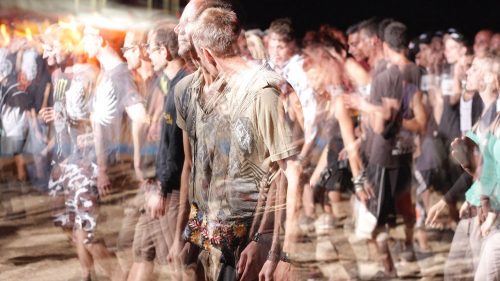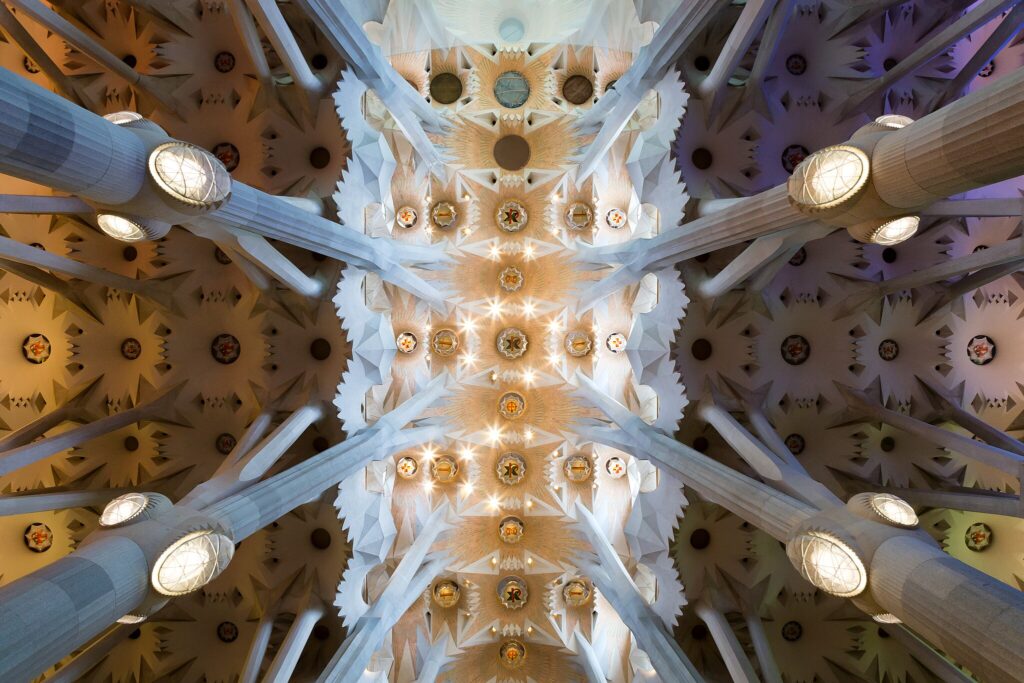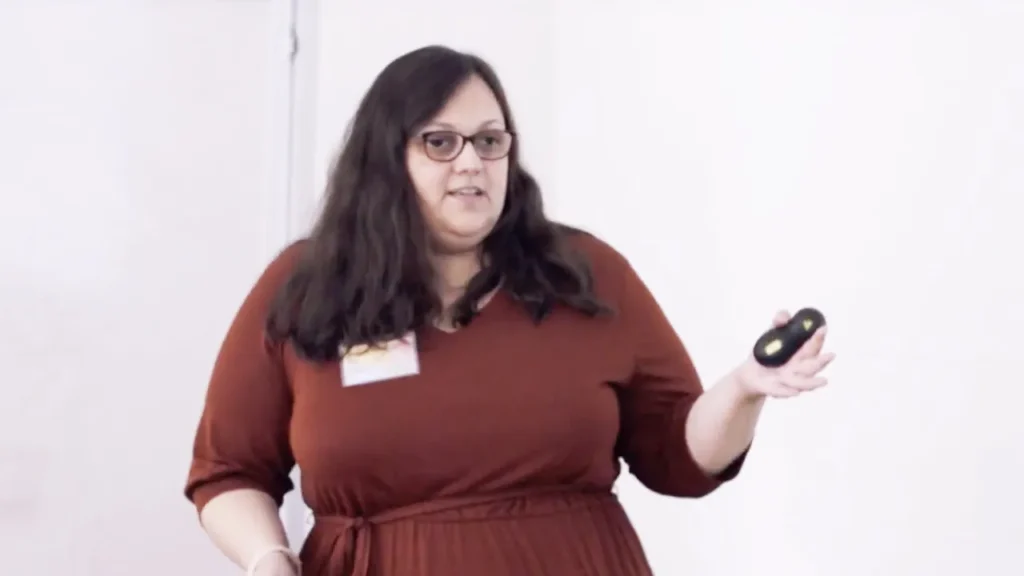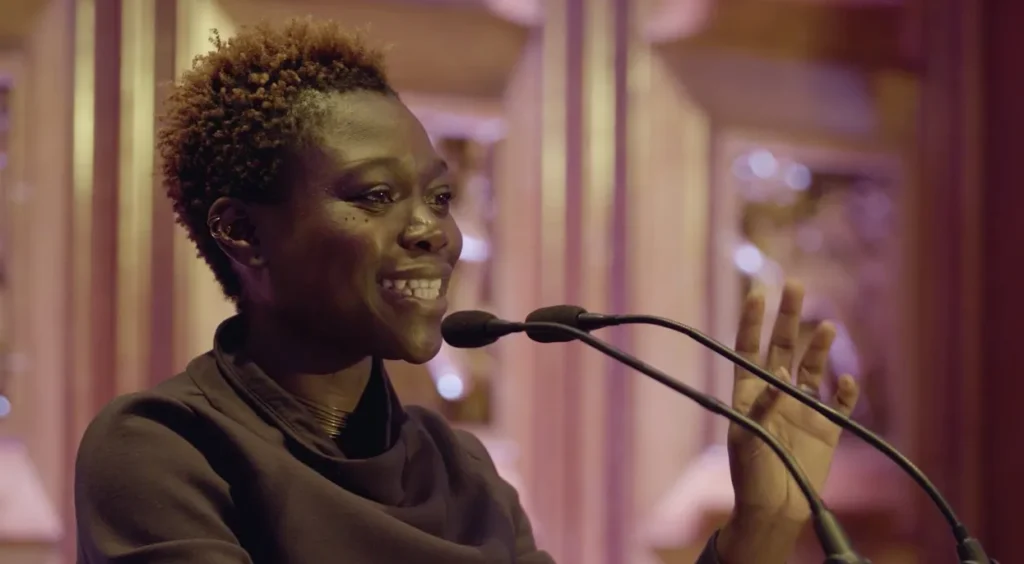Today, more than half of the world’s population lives in cities. However, by 2050 this is forecast to increase to two thirds. Creating cities that are receptive and responsive to their inhabitant’s needs is, or should be, the aim of urban planners and designers worldwide. Public spaces are a vital ingredient of such cities. But, what makes a great public space? What is it that makes these spaces more comfortable, both psychologically and physiologically, for some people more than others?
There have been several attempts to deconstruct and articulate what makes a public space work for its users (what Barker referred to as ‘synomorphy’)1. Some are focused on how spaces affect human emotions 2, some consider how users perceive and sense the space 3-5, while others consider how a space might affect physiological comfort 6-7. However, there is a gap in the literature in exploring how these factors may interact with each other and affect the human experience of public spaces.
Seeking to fill this gap, this paper will introduce ‘The Huss Index’. This is a methodology currently under development, which aims to explore the human experience in public spaces. Drawing widely from the academic literature and evidence-based design, this study will present a methodology to measure physiological and psychological comfort. This methodology which is experimental in nature evaluates the multisensory perception of spaces, and investigates how the physical environment affects users’ emotional status and comfort levels. The Huss Index aims to explore experiences in real time and space in everyday environments. It links an ethnographic approach for the subjective understanding
of space to the objective measurements of environmental experience.
Sensing space
In Eyes of the Skin, Juhani Pallasmaa noted, “Architecture is the art of reconciliation between ourselves and the world, and this mediation takes place through the senses.” 8. A person’s senses work together, in unison, to perceive and navigate through the world. Focusing on the senses in public life can reveal “an alternative geography of place by offering an insight into narratives, feelings, practices and experiences often hidden from common view” 9. So, every sense can be significant in transforming the experiential qualities of architecture and urban
design.
According to Pink (2009), attention to the senses “offers routes to analysing other people’s place-making practices” 9. The sensory aspect of the Huss Index is based on the five sensory systems introduced by Gibson (1966): the visual system, the auditory system, the taste–smell system, the basic-orienting system, and the haptic system 10. These systems use different cues for exploring the environment and feature a different perception range. Touch, smell, and taste provide information on the so called ‘near-space’, whereas visual and auditory systems can receive information over a greater range, or ‘far-space’.
‘Near-space’ is the space immediately around the person’s body. It can be explored by touch and thus is often called the ‘haptic-space’. Far-space is distant geographical space, which is required for travel; hence it is also referred to as the ‘locomotor-space’ 11.
Visual system
Stimulation of the visual system by both the natural and built environment has been shown to have restorative effects on people 12-13. Visual elements of mystery and complexity may encourage exploration and feelings of pleasure 14 especially in familiar situations 15. However, visual cues such as concealments may increase our fear of crime in public settings 15-16.
Auditory system
Soundscapes can be pleasant, even essential to our lives and well-being 17. Exposure to certain sounds such as those in nature have been found to support restorative experiences 18-19. However, noises prevalent in urban areas, including those from traffic and construction work, have been deemed as pollutants, adversely affecting our quality of life 20.
Basic-orienting system
The basic-orienting system is related to our permanent orientation to earth, constantly linked to gravity and the surfaces that support us. We also adopt temporary orientations to sources of sensory stimulation that we pay attention to such as heat, sounds and smells 10.
Haptic system
The haptic system is of particular importance to people with visual and mobility impairments. For example, tactile surfaces in urban spaces support safety and wayfinding 21. Tactile elements can also be a means of gaining spatial information and orientation, granting greater access to public spaces to more diverse users 21.
Taste-smell system
Research has demonstrated that ambient scents can elicit positive emotional responses, which in turn can directly influence behaviour. Without being aware of it, scents can alter people’s consumer behaviour as well as their social interaction 3, 22.
Emotions in space
Neuroscience studies have shown that we experience emotions before we are consciously aware of them 23. As short-term states related directly to environmental stimuli 24, emotions can be thought of as strongly linked with sensory perception.
Emotional states are vital to cognitive processes such as reasoning and decision-making 25 as well as social behaviours 26. Knowing how environments evoke emotional responses in individuals provides a basis for understanding how people engage and interact with spaces 27 and offer the designers, planners and managers of public spaces the chance to gauge people’s responses to different stimuli 28in the built environment.
Negative emotional responses in public spaces are important to understand since attempts to decrease experiences of anxiety are increasingly relevant in modern cities 29. Negative emotional responses such as fear can be triggered by urban stressors perceived to threaten our well-being 16. For example, fear of crime can limit people’s use of an environment and could possibly lead to actual social disorder 30. On the other hand, environmental stimuli can also elicit positive emotional responses of enjoyment and excitement 31-32.
However, how different environmental stimuli interact and combine to elicit desired emotions and behaviours is not yet clearly understood 24 and so there is a need to study how people respond emotionally to the multisensory stimuli encountered in daily life as they occupy and use different spaces.
Comfort in space
Efforts to reduce experiences of anxiety in public spaces are increasingly relevant in societies where anxiety is considered a symptom of modern city-living 29. Lederbogen et al. (2011) linked urban environments to social stress processing by subjecting healthy German participants from rural and city backgrounds to a stress-inducing task and measuring brain activity through MRI 33. This study found increased activity in the amygdala region of the brain in those who lived in the city. The amygdala’s associations with environmental threat, negative affect, anxiety and depression suggests exposure to urban environments may contribute directly to mental disorders.
However, there is a gap in understanding how public spaces might be designed to alleviate anxiety and generate a sense of psychological comfort among their users 29. This is of particular importance as there are different perspectives on what it means to be psychologically comfortable, such as having belonging, ownership or control and satisfaction of our basic needs and personal tastes 34-35.
According to Dillon (2005), psychological comfort in urban spaces is related to how public space design affects levels of psychological inclusion or exclusion 29. Kaplan and Kaplan (1982) explored the ability of environments to aid cognitive restoration and outlined spatial characteristics that are seen as inclusive. These characteristics balance coherence relating to spatial order and organisation, complexity (the amount and diversity of visual elements), legibility (the ease of orientation and wayfinding) and mystery (the suggestion of having more to explore than what it first perceived) 36.
In a similar vein, comfort can be thought of as the balance between relaxation and stimulation. When we enter a space, we perceive it through our senses. Sensory stimuli cause emotional arousal, which can lead to psychological and physiological responses of comfort or discomfort.
There is also an established body of work in the science of thermal comfort that can be used to understand how indoor and outdoor environmental conditions affect our experiences 6-7, 37-38. In this field, comfort can be understood in terms of a balance which considers the transfer of heat between the human body and its environment against a person’s metabolic rate. This also considers any adaptive responses consciously or unconsciously undertaken in response to different thermal sensations to achieve thermal satisfaction 39. It has also been defined as a mental condition of satisfaction with one’s thermal environment which can often be subjective, based on a person’s thermal history and psychological expectancy 37, 40. Therefore, while there can be some commonality in what all of us deem comfortable, we also recognise that significant differences can come from social and cultural expectations and experiences 41-43. As spaces, especially within cities, need to cater increasingly to users with diverse cultural backgrounds, there is a need to understand how this diversity can affect our shared experiences.
Diversity in space
It has been argued that understanding the relationship between people and their physical environment is an essential component of urban design 44. Exploring cultural background is therefore essential in understanding how humans interact with built environments. On one hand, people’s perceptions, decisions and experiences are based on their cultural values and backgrounds. But on the other hand, the built environment supports or inhibits human behaviour associated with culture 45-46.
Rapoport (1976) describes the environment as a form of ‘nonverbal communication’ where users have the means to decode its meanings. The environment will not communicate if the code is not shared or understood by its users 47. Cultures can be thought of as systems of information that code how people in groups or societies interact with their social and physical environments 43. Eisler et al. (2003) put forward that cultures have their own sets of rules which are learned and shared by members of the same culture 48. These rules act as standards for perceiving, believing, evaluating and communicating with others and with their environments. Cultural values give us an understanding about use or disuse, place attachment and the symbolic meanings of and in public spaces.
So who we are and where we come from can be just as significant as an environment’s objective physical attributes in determining how we perceive and experience public spaces.
This can be applied to assessments of how comfortable our physical environments are perceived. A study by Knez and Thorsson (2008) on the thermal, emotional and perceptual assessments of a park in with participants in Japan and Sweden, suggests that thermal, emotional and perceptual assessments of physical spaces may be linked to a person’s psychological and cultural processes, instead of being solely determined by physiological heat balance (models) 43. Furthermore, our early experiences with architecture may have an impact on later experiences with the (built) environment. This is shared by Rapoport (1982), who argued that in addition to its physical features, a place includes meanings perceived and decoded by people on the basis of their own expectations, roles, experiences and motivations 49. This reflects Henri Lefebvre’s (1991) ideas on how spaces are socially produced and maintained through the spatial practices of a society evident in people’s daily routines 50.
Methodology outline
This paper presents the outline of a new methodology for assessing how public spaces affect sensory experiences, emotions and comfort levels, while taking account of the cultural background of the participants/users. A series of methodologies have been studied to explore senses, emotions and comfort level. However, what is needed is a method of enquiry to capture these features together and simultaneously as one experience. To achieve this, the Huss Index combines ethnographic methods (i.e. walking interviews and sensory mapping) with technological measurement devices (i.e. GSR and EEG). This combination seeks to correlate what participants subjectively feel and have to say about their environmental experiences to their objective physical and emotional status in real time and space.
(1) Walking interviews
Walking interviews are considered as a ‘place-responsive’ methodology 51, that can generate richer data as participants are prompted by meanings and connections to the surrounding environment 52. The walking interview is a phenomenological research method that attends to sensorial elements of human experience and place-making 53. Walking interviews can produce quantitative data concerning the routes taken by participants, as well qualitative data from conversational exchange 52.
Some architectural research has adopted photo-interviewing as their methodology, however, they fall short in stimulating the actual experience of the spaces studied. Photographed architectural images, which are regularly used in architecture and environmental research methodologies are centralised images of focused ‘Gestalt’ 1,8,54. However, the quality of an architectural environment seems to depend fundamentally on peripheral vision, which enfolds the subject in the space 8. “A forest context and richly moulded architectural spaces provide ample stimuli for peripheral vision, and these settings centre us in the very space.” 8
Therefore, the exploration of an architectural experience cannot be complete and cannot represent reality unless it occurs within the studied space. Walking in the street means that both researcher and participant are exposed to the multisensory stimulation of the surrounding environment, rather than surrounded in a filtered ‘blandscape’ 55-56.
(2) Sensory mapping
Typically, maps are considered and used as a directional tool, a graphic means of representing places that are held to particular conventions of scale, scope, symbol, and legend. But mapping as a methodological tool has taken many forms, pushing past its use as an orientation device. Kimberly Powell (2010) addresses mapping as a particularly powerful mode of visual research that offers a means to represent place as lived and embodied and as a means of encountering and representing empirical material, particularly in the ways that the visual evokes multisensory, and thus an embodied, experience 57.
For the Huss Index mapping is a tool to register the sensory perception of users/participants and therefore will be referred as “sensory mapping”. Walking interviews will be utilised to capture sensory perceptions of urban environments. The maps will be generated by data gathered from a diverse cross-section of participants selected for the walking interviews.
(3) Using devices such as GSR, EEG and wireless temperature and humidity sensors
One of the most sensitive markers for emotional arousal is galvanic skin response (GSR), also referred to as skin conductance (SC). GSR measures the amount of sweat discharge from sweat glands. The amount of sweat glands varies across the human body, being highest in hand and foot regions. While sweat secretion plays a major role for thermoregulation and sensory discrimination, changes in skin conductance in hand and foot regions are also triggered by emotional stimulation 58. The assumption is that these changes are an indication of ‘emotional intensity’.
The other device to register emotional status is the EEG, which is used for gaining insights into the neural basis of human cognitive responses to external stimuli such as situations and environments. 28Mobile EEG provides non-invasive methods of capturing the affective states of people as they occupy environments. Brain waves are measured according to amplitude and frequency. EEG waves are classified into several frequency bands: alpha, beta, gamma, delta, theta and mu. These bands are independent of each other and are generally mapped to specific brain and mental states. For example, higher values of alpha are understood to be an indication of low brain activity typical of a relaxed mental state; beta band waves on the other hand, are dominant during an active, alert state of mind. So we would expect such readings to indicate something about a person’s mood as he/she moves through a space. 28
The main advantage of EEG over other measures such as GSR (galvanic skin response) is that it enables researchers to identify which brain regions are activated and their role in human behaviour. Both positive (“happy” or “joyful”) and negative (“threatening” or “saddening”) stimuli can result in an increase in arousal – and in an increase in skin conductance and GSR cannot register whether an experience is positive or negative.
GSR and EEG based assessment of preferences and behaviours in architectural and urban spaces could contribute to more effective design, policy making, and the creation of spaces that contribute positively to people’s mood and wellbeing and comfort status. 27-28
Additionally, wireless temperature and humidity sensors can be utilised to measure and control the physiological and thermal comfort.
Conclusions
Better understanding of how the physical environment and public spaces influence users’ experience can provide academics and professionals with sound evidence on which to base future research, design and management. This paper sought to outline ‘The Huss Index’, a research methodology currently under development for investigating how people experience public spaces. The process of experiencing space is a multifaceted phenomenon, which could not be targeted simply through existing methodologies. In this regard, this study aimed to investigate the process of experiencing space: sensing environments, arousal, changes in emotional status and the alteration in comfort levels. However, the physical environment is not the only attribute which can affect how a space is experienced. Individual characteristics and cultural background can influence the way a person engages with a space.
The simultaneous use of walking interviews, sensory mapping and devices such as GSR and EEG will give researchers the opportunity to develop a more comprehensive understanding of users’ experience of different spaces. While the walking interviews may capture cultural background, previous associations and the sensory stimulus, the GSR and EEG can record emotional status and arousal levels. This experimental methodology not only supports investigation of sensory stimuli and emotional experiences, but also generates the opportunity for exploring how these factors may interact with each other and how these perceptions and experiences might relate to one’s cultural background and life experiences.
The next step of this research involves iterative testing and refining the methodology with helping professionals in the built environment in their practice to improve the qualities of public spaces. Furthermore, it is intended that this methodology can then be applied to internal spaces, within buildings.
Some of the questions that will be addressed in the future stages of development include:
- What visual representations can be used to link the subjective and objective data?
- What factors should be considered in selecting suitable spaces to study?
- How can the physical qualities of the spaces which participants experience be
characterised? - How can we use information of users’ emotional responses to public spaces to help professional improve experiences of people in public spaces?
However, the intention of this paper is to start a broader dialogue on two levels. Firstly, we are interested in discussing the broader importance of measuring the human experience of public space, particularly in terms of urban design praxis. Secondly, we are interested in having a more focused discussion on the technical aspects of developing such a methodology.
References
1 R. G. Barker, Ecological psychology, Stanford University Press, (1968)
2 S. Rankel, Future lighting and the appearance of cities at night: A case study. Urbaniizziv. 25, 126 (2014)
3 M. F. Haberland, The power of scent: Empirical field studies of olfactory cues on purchase behavior University of St. Gallen (2010)
4H. Jahncke, S. Hygge, N. Halin, A. M. Green, and K. Dimberg, Open-plan office noise: Cognitive performance and restoration. Journal of Environmental Psychology. 31, 373-382 (2011)
5 Y. Smyrnova, and J. Kang, Determination of perceptual auditory attributes for the auralization of urban soundscapes. Noise Control Engineering Journal. 58, 508-523 (2010)
6 P. Augspach, Assessing Pedestrian Thermal Comfort within the Buenos Aires Climatic Context. (2014)
7 F. Gómez, A. P. Cueva, M. Valcuende, and A. Matzarakis, Research on ecological design to enhance comfort in open spaces of a city (Valencia, Spain). Utility of the physiological equivalent temperature (PET). Ecological Engineering. 57, 27-39 (2013)
8 J. Pallasmaa, The eyes of the skin: architecture and the senses, John Wiley & Sons, (2012)
9 S. Pink, Doing sensory ethnography. [electronic resource.], Los Angeles, Calif. ; London : SAGE, 2009., (2009)
10 J. J. Gibson, The senses considered as perceptual systems. (1966)
11 M. Hersh, and M. A. Johnson, Assistive technology for visually impaired and blind people, Springer Science & Business Media, (2010)
12 G. Felsten, Where to take a study break on the college campus: An attention restoration theory perspective. Journal of Environmental Psychology. 29, 160-167 (2009)
13 P. J. Lindal, and T. Hartig, Architectural variation, building height, and the restorative quality of urban residential streetscapes. Journal of Environmental Psychology. 33, 26-36 (2013)
14 S. Kaplan, and R. Kaplan, in Environments for people, Duxberry press North Scitiate, MA, (1978).
15 J. L. Nasar, and K. M. Jones, Landscapes of fear and stress. Environment and behaviour. 29, 291-323 (1997)
16 L. J. Jorgensen, G. D. Ellis, and E. Ruddell, Fear Perceptions in Public Parks Interactions of Environmental Concealment, the Presence of People Recreating, and Gender. Environment and Behavior. 45, 803-820 (2013)
17 T. Stockfelt, Sound as an existential necessity. Journal of sound and vibration. 151, 367-370 (1991)
18 M. S. Tse, C. K. Chau, Y. S. Choy, W. K. Tsui, C. N. Chan, and S. K. Tang, Perception of urban park soundscape. The Journal of the Acoustical Society of America. 131,2762-2771 (2012)
19 H. Jahncke, K. Eriksson, and S. Naula, The effects of auditive and visual settings on perceived restoration likelihood. Noise and Health. 17, 1 (2015)
20 A. M. Dzhambov, and D. D. Dimitrova, Urban green spaces’ effectiveness as a psychological buffer for the negative health impact of noise pollution: A systematic review. Noise and Health. 16, 157 (2014)
21 M. Dischinger, and J. M. Jackson Filho, Can Tactile Tiles Create Accessible Urban Spaces? Space and Culture. 1206331212445958 (2012)
22 D. M. V. Zemke, and S. Shoemaker, Scent across a crowded room: Exploring the effect of ambient scent on social interactions. International Journal of Hospitality Management. 26, 927-940 (2007)
23 J. P. Eberhard, Brain landscape the coexistence of neuroscience and architecture, Oxford University Press, (2008)
24 E. Schreuder, J. van Erp, A. Toet, and V. L. Kallen, Emotional Responses to Multisensory Environmental Stimuli. SAGE Open. 6, 2158244016630591 (2016)
25 A. R. Damasio, Descartes’ error, Random House, (2006)
26 G. Rizzolatti, and L. Craighero, The mirror-neuron system. Annu. Rev. Neurosci. 27, 169-192 (2004)
27 J. Roe, and P. Aspinall, The restorative benefits of walking in urban and rural settings in adults with good and poor mental health. Health & place. 17, 103-113 (2011)
28 P. Mavros, R. Coyne, J. Roe, and P. Aspinall, Engaging the Brain. (2012)
29 R. Dillon, Designing urban space for psychological comfort: the Kentish Town Road project. Journal of Public Mental Health. 4, 10-20 (2005)
30 J. L. Nasar, B. Fisher, and M. Grannis, Proximate physical cues to fear of crime. Landscape and urban planning. 26, 161-178 (1993)
31 T. R. Herzog, A cognitive analysis of preference for urban spaces. Journal of environmental psychology. 12, 237-248 (1992)
32 Y. Joye, and A. E. v. d. Berg, in Environmental psychology: An introduction, Edited by L. Steg, A. E. van den Berg and J. I. De Groot, John Wiley & Sons, (2012).
33 F. Lederbogen, P. Kirsch, L. Haddad, F. Streit, H. Tost, P. Schuch, S. Wüst, J. C. Pruessner, M. Rietschel, and M. Deuschle, City living and urban upbringing affect neural social stress processing in humans. Nature. 474, 498-501 (2011)
34 R. W. Krumwiede, Social Ecology and Environmental Psychology as Applied to the Design and Renovation of American University Campuses. (1999)
35 J. C. Vischer, The effects of the physical environment on job performance: towards a theoretical model of workspace stress. Stress and Health. 23, 175-184 (2007)
36 S. Kaplan, and R. Kaplan, Cognition and environment: Functioning in an uncertain world, Ulrich’s Ann Arbor, MI, (1983)
37 P. Höppe, Different aspects of assessing indoor and outdoor thermal comfort. Energy and buildings. 34, 661-665 (2002)
38S. Oliveira, and H. Andrade, An initial assessment of the bioclimatic comfort in an outdoor public space in Lisbon. International Journal of Biometeorology. 52, 69-84 (2007)
39 M. Nikolopoulou, N. Baker, and K. Steemers, Thermal comfort in outdoor urban spaces: understanding the human parameter. Solar energy. 70, 227-235 (2001)
40 W. Klemm, B. G. Heusinkveld, S. Lenzholzer, M. H. Jacobs, and B. Van Hove, Psychological and physical impact of urban green spaces on outdoor thermal comfort during summertime in The Netherlands. Building and Environment. 83, 120-128 (2015)
41 F. Aljawabra, and M. Nikolopoulou, Influence of hot arid climate on the use of outdoor urban spaces and thermal comfort: Do cultural and social backgrounds matter? Intelligent Buildings International. 2, 198-217 (2010)
42 Thermal comfort and outdoor spaces: The cultural perception. Proceedings of the Proceedings of the 28th International Passive and Low Energy Architecture (PLEA) Conference: Towards an Environmentally Responsible Architecture, (2012);
43 I. Knez, and S. Thorsson, Thermal, emotional and perceptual evaluations of a park: Cross-cultural and environmental attitude comparisons. Building and Environment. 43, 1483-1490 (2008)
44 M. Carmona, Public places, urban spaces: the dimensions of urban design, Rutledge, (2010)
45 R. G. Barker, On the nature of the environment. Journal of Social Issues. (1963)
46 A. Rapoport, The mutual interaction of people and their built environment, Walter de Gruyter, (1976)
47 A. Rapoport, Sociocultural aspects of man-environment studies. The Mutual Interaction of People and Their Environment. 7-35 (1976)
48 A. D. Eisler, H. Eisler, and M. Yoshida, Perception of human ecology: cross-cultural and gender comparisons. Journal of Environmental Psychology. 23, 89-101 (2003)
49 A. Rapoport, The meaning of the built environment: A nonverbal communication approach, University of Arizona Press, (1982)
50 H. Lefebvre, The production of space, Oxford Blackwell, (1991)
51[51] J. Lynch, and G. Mannion, Enacting a place-responsive research methodology: walking interviews with educators. Journal of Adventure Education and Outdoor Learning. 1-16 (2016)
52 J. Evans, and P. Jones, The walking interview: Methodology, mobility and place. Applied Geography. 31, 849-858 (2011)
53 S. Pink, Walking with video. Visual Studies. 22, 240-252 (2007)
54 B. Kolb, Unveiling Space by using Participatory Photo Interview. Online Research Methods in Urban and Planning Studies: Design and Outcomes: Design and Outcomes. 120 (2012)
55 K. Bijsterveld, Acoustic cocooning: How the car became a place to unwind. The Senses and Society. 5, 189-211 (2010)
56T. Edensor, Sensing the ruin. The Senses and Society. 2, 217-232 (2007)
57 K. Powell, Making sense of place: Mapping as a multisensory research method. Qualitative Inquiry. 16, 539-555 (2010)
58 W. Boucsein, Electrodermal activity, Springer Science & Business Media, (2012)










